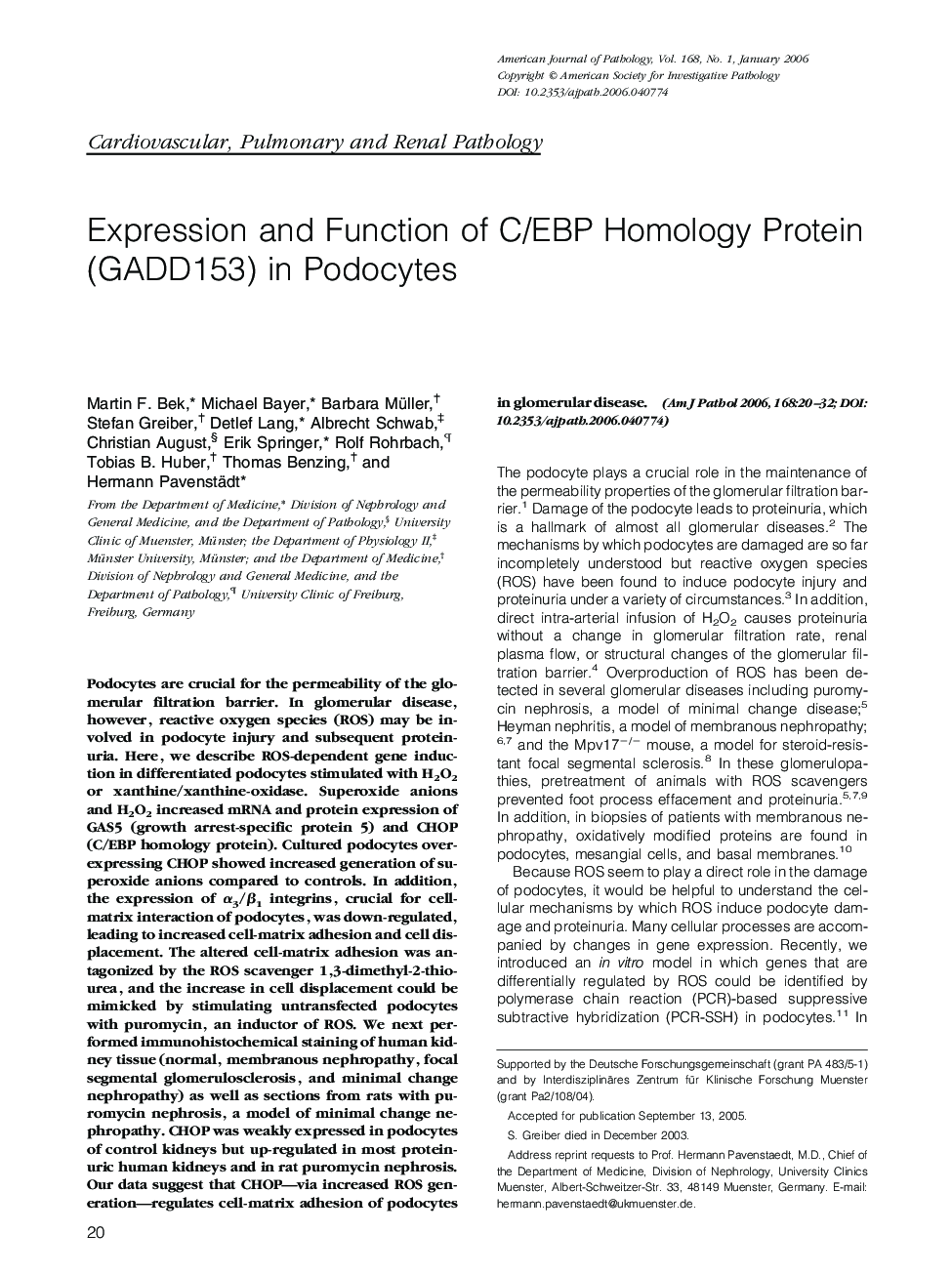| Article ID | Journal | Published Year | Pages | File Type |
|---|---|---|---|---|
| 5940215 | The American Journal of Pathology | 2006 | 13 Pages |
Abstract
Podocytes are crucial for the permeability of the glomerular filtration barrier. In glomerular disease, however, reactive oxygen species (ROS) may be involved in podocyte injury and subsequent proteinuria. Here, we describe ROS-dependent gene induction in differentiated podocytes stimulated with H2O2 or xanthine/xanthine-oxidase. Superoxide anions and H2O2 increased mRNA and protein expression of GAS5 (growth arrest-specific protein 5) and CHOP (C/EBP homology protein). Cultured podocytes overexpressing CHOP showed increased generation of superoxide anions compared to controls. In addition, the expression of α3/β1 integrins, crucial for cell-matrix interaction of podocytes, was down-regulated, leading to increased cell-matrix adhesion and cell displacement. The altered cell-matrix adhesion was antagonized by the ROS scavenger 1,3-dimethyl-2-thiourea, and the increase in cell displacement could be mimicked by stimulating untransfected podocytes with puromycin, an inductor of ROS. We next performed immunohistochemical staining of human kidney tissue (normal, membranous nephropathy, focal segmental glomerulosclerosis, and minimal change nephropathy) as well as sections from rats with puromycin nephrosis, a model of minimal change nephropathy. CHOP was weakly expressed in podocytes of control kidneys but up-regulated in most proteinuric human kidneys and in rat puromycin nephrosis. Our data suggest that CHOP-via increased ROS generation-regulates cell-matrix adhesion of podocytes in glomerular disease.
Related Topics
Health Sciences
Medicine and Dentistry
Cardiology and Cardiovascular Medicine
Authors
Martin F. Bek, Michael Bayer, Barbara Müller, Stefan Greiber, Detlef Lang, Albrecht Schwab, Christian August, Erik Springer, Rolf Rohrbach, Tobias B. Huber, Thomas Benzing, Hermann Pavenstädt,
